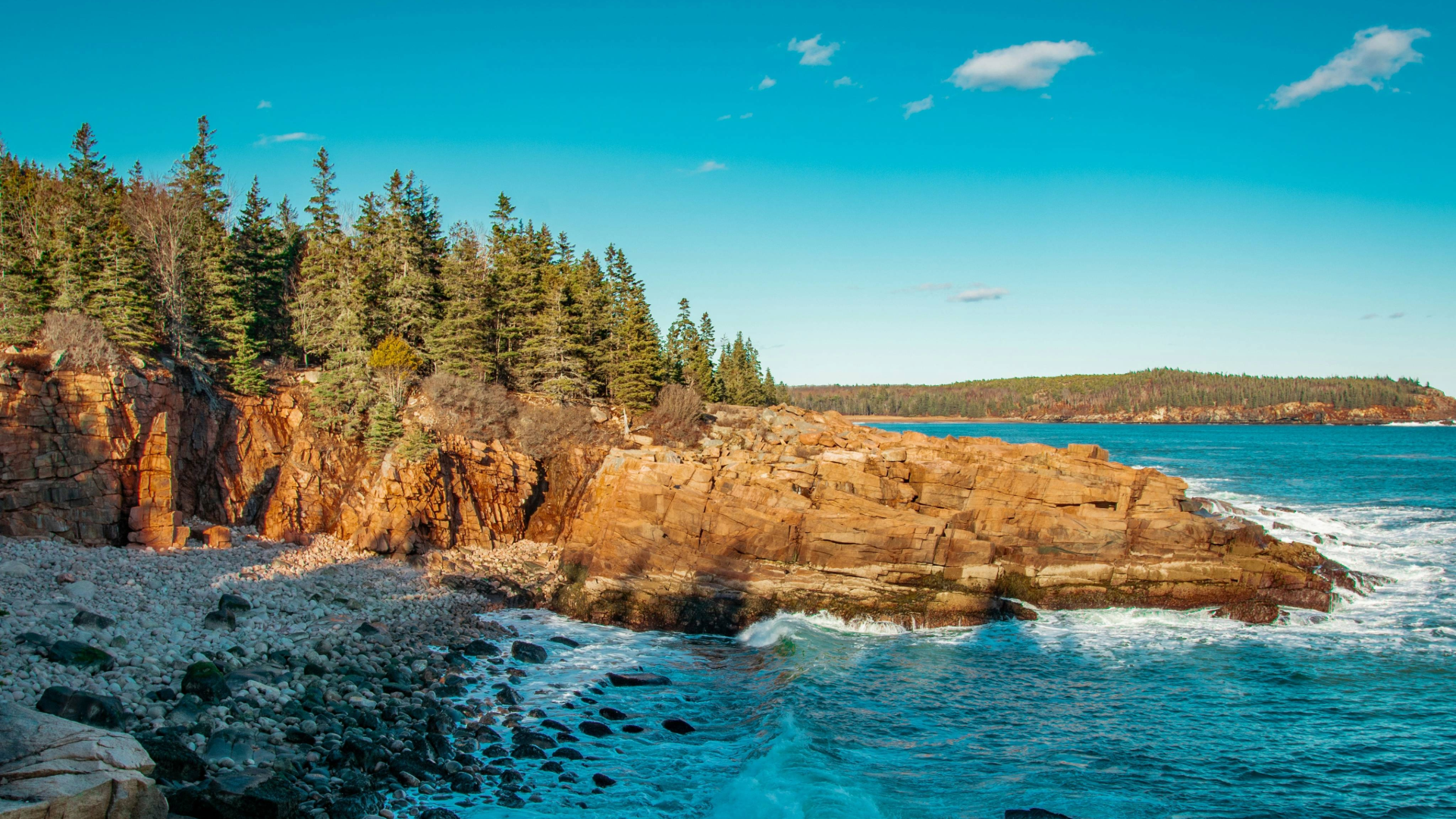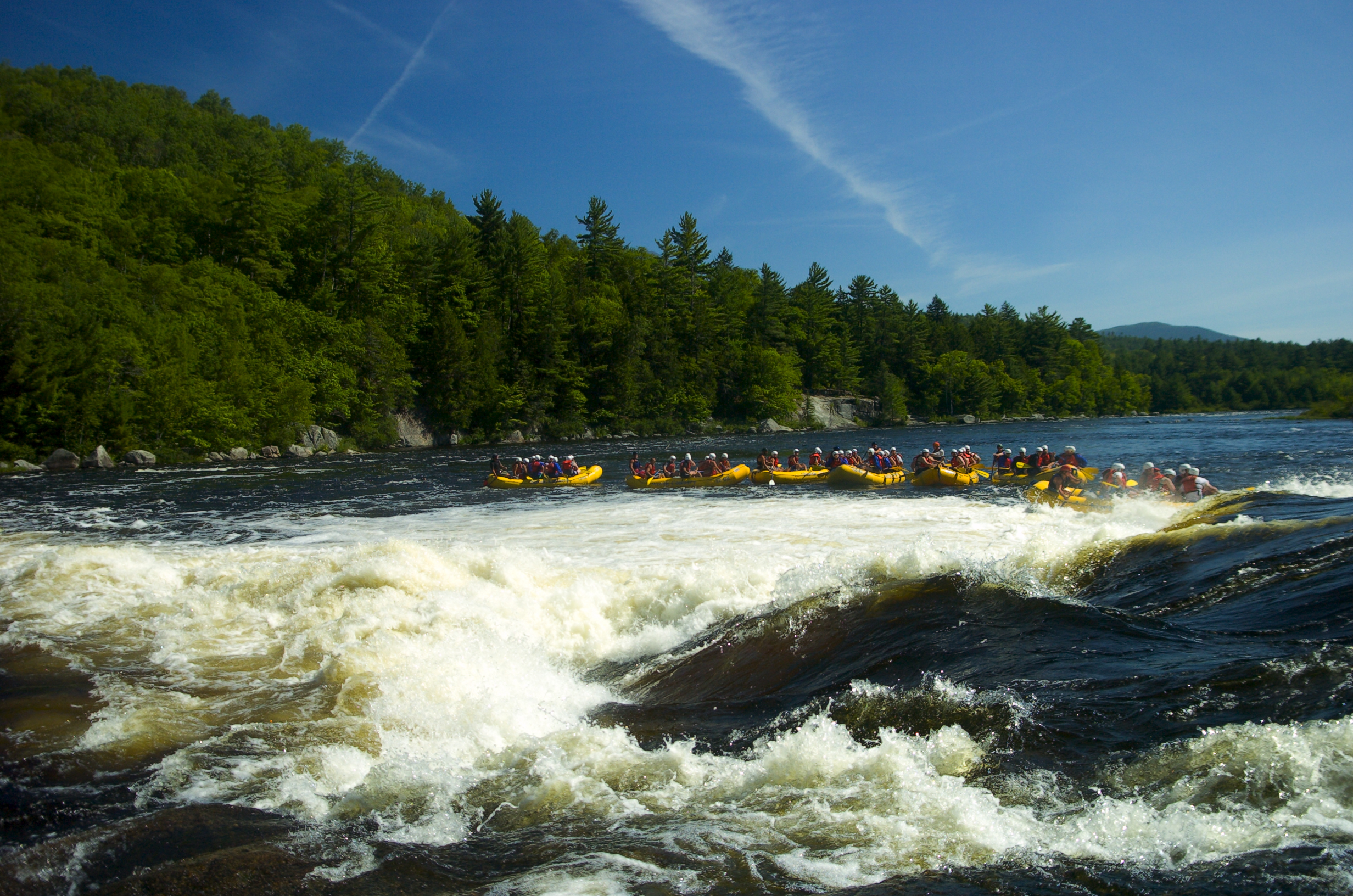White water rafting is an exhilarating way to connect with nature and enjoy quality time with family.
Whether you’re a seasoned rafter or a first-timer, understanding the rapids classification system is key to planning a safe and fun trip.
Our guide will help you navigate the different classes of rapids and choose the right adventure on Maine’s Kennebec, Penobscot, or Dead rivers.
The International Scale of River Difficulty
The International Scale of River Difficulty classifies rapids to help rafters gauge the challenge level of different river sections. Knowing this system ensures you pick rapids that match your skill level and experience, making your rafting adventure both safe and enjoyable.
Class I: Easy
Class I rapids are gentle with fast-moving water and few obstacles. They are perfect for beginners and families with young children. Basic safety gear like life jackets is enough, and minimal paddling skills are needed.
Imagine a serene float down a quiet river, where gentle waves and the sounds of nature create the perfect setting for a peaceful family outing. These rapids offer a calm and scenic introduction to the joys of rafting, ideal for easing into the sport without any stress.
Class II: Novice
Class II rapids have straightforward routes with some maneuvering needed. Ideal for novice rafters and families seeking mild adventure, these rapids require basic paddling skills and life jackets.
On the Kennebec River, you might encounter small splashes and simple paddling, which is exciting but not too challenging, making it great for families with older children.
Best Time to Visit: Late spring to early summer, when water levels are higher but manageable.
Trip Duration and Exertion: Expect trips to last around 2-3 hours with moderate physical activity, providing a fun yet safe introduction to rafting.
Book Your Rafting Adventure Now
Class III: Intermediate
Class III rapids are moderately difficult with irregular waves and narrow passages, suitable for families with older children or those with some rafting experience. Helmets and advanced paddling techniques are required.
On the Dead River, you can expect moderate drops and waves that require teamwork and quick thinking, making it a fun challenge.
The Kennebec and Penobscot rivers also feature Class III rapids.
Best Time to Visit: Spring and fall, when water flows are more substantial.
Trip Duration and Exertion: Trips usually last 3-4 hours and involve more physical exertion and coordination, perfect for those seeking a bit more adventure.
Book Your Rafting Adventure Now
Class IV: Advanced
Class IV rapids are intense and powerful, requiring precise maneuvering and teamwork.
Found in sections of the Kennebec, Penobscot, and Dead rivers, these rapids are best for experienced rafters and adventurous families with older teenagers. Full protective gear, including helmets and life jackets, is essential. These rapids involve large, churning waves that need precise paddling and teamwork.
Best Time to Visit: Spring, when snowmelt increases river flow.
Trip Duration and Exertion: Expect a full-day adventure with high levels of physical activity and teamwork, offering an exciting and rewarding experience.
Book Your Rafting Adventure Now
Class V: Expert
Class V rapids are extremely difficult with intense waters and unpredictable conditions. These are suitable only for expert rafters with extensive experience. On the Penobscot and Dead rivers, these rapids offer powerful currents and significant drops, requiring comprehensive safety equipment and expert navigation. This level is not for beginners and demands high skill and fitness.
Best Time to Visit: Late spring and early summer, when water levels peak.
Trip Duration and Exertion: Often full-day trips with very high physical demands and expert coordination, providing a challenging and exhilarating adventure for seasoned rafters.
Book Your Rafting Adventure Now
Class VI: Extreme and Exploratory
Class VI rapids are nearly unrunnable and pose life-threatening hazards. They feature extreme drops and dangerous obstacles, requiring the highest level of preparation, safety gear, and emergency support. These rapids are reserved for professional rafters and explorers.
Best Time to Visit: Conditions vary; expeditions often require detailed planning and timing.
Trip Duration and Exertion: Expedition-level preparation and endurance, often spanning multiple days, making this the ultimate test of skill and bravery.
Factors Influencing Rapid Classification
Understanding the factors that influence rapid classification is crucial for planning a successful white water rafting trip.
The classification of rapids can change due to various environmental and seasonal factors, making each rafting experience unique.
Water Levels: The amount of water flowing through a river significantly impacts the difficulty of rapids. Higher water levels generally lead to more challenging rapids due to stronger currents and more powerful waves. Conversely, lower water levels can expose more rocks and obstacles, increasing the technical difficulty.
Seasonal variations play a big role here—spring snowmelt from surrounding mountains can dramatically raise river levels, turning moderate rapids into formidable challenges. On rivers regulated by dams, such as the Kennebec, scheduled water releases can create predictable high-water conditions ideal for rafting.
Riverbed Shape and Gradient: The shape and features of the riverbed, including its gradient, determine the formation and classification of rapids. Steep gradients result in faster water flow and more turbulent rapids. Natural formations like boulders, ledges, and narrow passages add to the complexity. For instance, the Penobscot River is known for its dramatic drops and technical runs, making it a favorite for experienced rafters.
Seasonal Changes: Seasonal changes, such as spring snowmelt and rainfall patterns, significantly affect rapid classification. Spring snowmelt can raise water levels and alter the character of rapids, offering thrilling experiences, especially on rivers like the Dead River known for its spring releases. Heavy rains can also lead to sudden spikes in river levels, temporarily changing the classification of rapids. Understanding these seasonal dynamics helps rafters choose the best times for their skill level.
By considering these factors, rafters can better prepare for their adventures, ensuring a safe and enjoyable experience on the Kennebec, Penobscot, and Dead Rivers. Whether you’re looking for a gentle ride or an adrenaline-pumping challenge, knowing how water levels, riverbed shape, and seasonal changes affect the rapids will help you choose the right adventure.
Conclusion
White water rafting is a fantastic way to experience nature and create lasting family memories. Understanding the rapids classification system helps you choose the right adventure, ensuring safety and enjoyment. So grab your paddle, put on your life jacket, and get ready for an incredible journey on the river!
The Kennebec, Penobscot, and Dead Rivers offer a range of experiences for every skill level, from serene floats to adrenaline-pumping challenges.
For more information, check out the American Canoe Association’s guidelines on rafting safety and techniques. North Country Rivers can help with guided trips and training sessions on the Kennebec, Penobscot, and Dead Rivers. With the right preparation and understanding, your rafting adventure will be both thrilling and safe, providing lasting memories and a deeper connection with nature.
Book Your Rafting Adventure Now
Need More Information? Contact us for personalized trip planning and advice.












